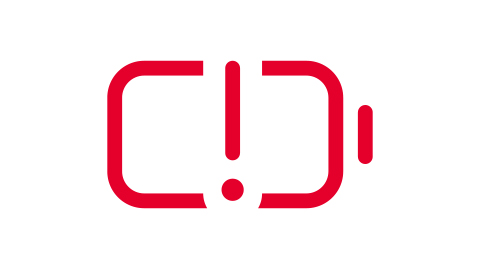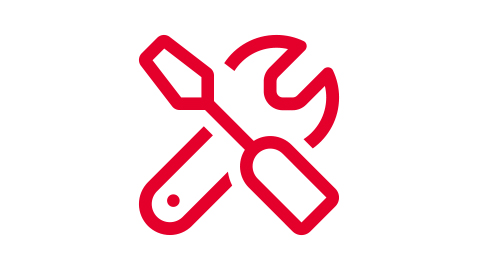Answering some common questions about mobile elevating work platform maintenance

Proper maintenance of mobile elevating work platforms (MEWPs) such as scissor lifts, boom lifts, spider lifts, vertical mast lifts and push-around lifts is a win-win situation. First and foremost, daily pre-use walkaround inspections and a fixed maintenance schedule are critical to keeping the machine functioning and ensuring safety when working at height. But they also extend the lifespan of machines and minimise the risk of unexpected downtime, saving money in a number of ways. Therefore, it is unsurprising that “how to properly maintain a MEWP” is a hot topic. In this blog, we answer some of the most common questions regarding maintenance.
What must be checked on a mobile elevating work platform before use?

Since safety is paramount when working at height, the operator should inspect the mobile elevating work platform before use. This is known as the pre-use walkaround inspection and includes the visual inspection and monitoring of vital machine components. It ensures that potential problems are identified before they become major issues.
Some things that should be done during the pre-use walkaround inspection are (in no particular order):
- Completing a function test: lifting mechanism, driving, braking, etc. This must be done in an area free from overhead and ground-level obstructions;
- Performing safety inspections, such as checking the guards and rails of the platform and ensuring that the platform gate closes properly;
- Ensuring that there is no damage to the machine like weld or metal cracks;
- Checking fluid levels, such as engine coolant and oil, hydraulic fluid, etc. and inspecting for leaks;
- Checking whether all necessary stickers and decals are present on the machine and if they are clean and legible;
- Ensuring that the tyres or wheels are not cracked or otherwise damaged;
- Etc.
However, the exact list of items to be checked during the pre-use inspection will depend on the type of MEWP, its way of drive (combustion, hybrid or electric) and the working environment in which it is typically used. Therefore, it’s always best to refer to the machine’s operation and maintenance manuals to know what inspections are required.

What about battery maintenance?
Because batteries are so important to the operation of battery-powered MEWP (hybrid and electric models), these components require extra attention during the pre-use walkaround inspection. What’s more, batteries that aren’t properly maintained will wear out faster and will need to be replaced sooner.
Some battery-related things that the operator should do during the pre-use inspection are:
- Ensuring the battery cables are securely connected;
- Ensuring the integrated battery chargers are clear of dirt and debris;
- Checking for any damage and corrosion on and around the batteries;
- Ensuring the batteries are charged, and plugging them in if needed;
- Checking the fluid levels of the batteries. If the levels are low, the operator should first fully charge them and then add distilled water to reach the appropriate level (the appropriate level is indicated in the machine manual);
- Etc.
What does general MEWP maintenance entail?

In addition to the pre-use inspection, mobile elevating work platforms should undergo more thorough general maintenance, which a maintenance technician must carry out. But again, the exact nature of this maintenance will depend on the type of MEWP. That’s why the technician should always refer to the machine manuals for an overview of which machine components should be inspected and how.
Some operational checks that are just about always part of this list are (in no particular order):
- Testing all emergency controls – such as horns, gauges, lights, backup alarms, etc. – to ensure they are working properly;
- Inspecting and testing of the steering and braking systems;
- Checking all fluid levels;
- Performing a thorough battery and charge level check;
- Checking the tyres or wheels for structural damage;
- Etc.
There are also some structural checks that the technician should always carry out, whereby he will look very specifically at certain machine components to identify any defects. The following components should be inspected: all systems (including air, electrical, pneumatic and hydraulic systems), mechanical fasteners and locking pins, cable and wiring, guardrails, outriggers and stabilisers, and more. If the inspection reveals damage to any of these components, the MEWP cannot be used until it has been repaired.
How often should a mobile elevating work platform be serviced?

Adherence to a fixed maintenance schedule is the best way to increase safety and extend the lifespan of mobile elevating work platforms. Therefore, pre-use walkaround inspections and thorough general maintenance are equally important.
Pre-use walkaround inspection
As the name suggests, the pre-use walkaround inspection should be carried out before each use of a MEWP. It should therefore be carried out daily or whenever a new operator takes over the machine, for example at shift change.
General maintenance and major inspections
General maintenance and thorough inspections are a vital part of routine and preventive maintenance (for more information on routine and preventive maintenance, see our blog on why construction equipment maintenance matters). Therefore, it is imperative to adhere to a fixed schedule. As a rule of thumb, many MEWP manufacturers recommend general maintenance every three months or every 150 working hours, whichever comes first. The machine manual indicates if the MEWP should be serviced at a different interval and specifies what exactly needs to be checked. This type of maintenance is also required when the machine has been out of service for more than three months or has just been purchased.
In addition, mobile elevating work platforms should be subject to a major inspection to ensure that the machine continues to comply with safety regulations and operates at optimum levels. The exact timing of this inspection varies from country to country and may be linked to a mandatory inspection by an external agency.
How to prepare a mobile elevating work platform for cold weather?

Mobile elevating work platforms contain several components that can be affected by cold weather. That is why it’s crucial to take extra care of the machine during the winter months. The operator should pay particular attention to some parts during the pre-use inspection, such as seals and gaskets.
Equally important in winter is using the right fluids. This means adding engine antifreeze and choosing oils, coolants and fuels appropriate to the specific conditions. You should always refer to the machine manual for all information on the types of fluids required for the temperature range in which the MEWP will be used. The manual will normally also give guidance on how to operate the machine in these conditions.
Another measure against the cold is to cover the control systems (control boxes, switches, joysticks, etc.) as much as possible to prevent ice build-up. When the temperature rises and the ice melts, water can get into the electrical components and wreak havoc. That is also why it’s best to store the MEWP in a temperature-controlled area when not in use.
What about battery-powered MEWPs?
As cold weather can severely affect battery performance and charge, additional measures are required for battery-powered mobile elevating work platforms:
- Charge the batteries whenever possible. When their batteries are low, MEWPs are designed to limit performance to still provide basic machine functionality. However, the cold can cause large voltage drops in lead-acid batteries, causing the machine’s control system to think the batteries are almost flat. Charging the batteries whenever possible ensures that they are always as highly charged as possible, keeping their voltage in the optimum operating range for continued machine use.
- Plug in the batteries overnight. Ideally, MEWP batteries should be charged for at least four hours (eight to ten hours is ideal) between shifts. This is necessary for three reasons. Firstly, charging warms up the batteries, ensuring they are ready to go when the machine is switched on at the start of the working day. Secondly, starting the day with fully charged batteries minimises the risk of large voltage drops. Finally, fully charged batteries are less likely to become deeply discharged. In extreme cold, this can cause the battery to freeze and the MEWP won’t function. Warning: never attempt to charge a frozen battery, because this could cause it to explode!
- Keep the batteries warm. The batteries of mobile elevating work platforms can be charged in the cold, but this will always be at a lower rate. Therefore, it’s better to charge the machine indoors (preferably at room temperature).
In addition to the above measures, the operator should also pay extra attention to the batteries during the pre-use walkaround inspection (see paragraph ‘What about battery maintenance?’ above).
How to prepare a mobile elevating work platform for a standstill?

Whether it’s because of a change in work schedule or a holiday, sometimes a mobile elevating work platform will be at a standstill for a while. There are a number of steps you can take to ensure that the machine gets through this period as well as possible.
The first step is to carry out a thorough inspection of the machine before storing it. This includes checking all essential components and systems such as tyres, controls, safety devices, the electrical system, etc. Pay particular attention to the hydraulic system: check the hydraulic oil level — and top up if it’s low — and inspect the hoses and connections for leaks or other damage.
If the MEWP is battery-powered, additional measures must be taken:
- Ensure that the batteries are fully charged before storing the machine. Leaving the batteries partially charged for a long period of time can damage them and reduce their capacity and life.
- If possible, disconnect the main power circuit plug to avoid any slow discharge or phantom power consumption.
Inspect the battery terminals for signs of corrosion and clean them if necessary. - Check the battery's fluid levels and, if needed, fill it to the recommended level with distilled water (the appropriate level is indicated in the machine manual).
Once these checks have been completed, store the mobile elevating work platform in a dry and safe area. Parking indoors is ideal, but consider covering the MEWP with a tarp if this isn’t possible. After all, harsh weather conditions can cause considerable damage to the machine.
Looking for parts?
- Click here to check out our complete parts range for mobile elevating work platforms.
- Visit our online shop to order parts and accessories for mobile elevating work platforms.
- Please feel free to contact us if you have any other questions.
Want to read more about maintenance?
Then the following blogs might also be interesting for you:
About the authors
This blog post is brought to you by your construction equipment marketing team.
Request your customer account to shop parts online
Submit the application form to specify your business needs and request your customer account.
Our sales team will contact you within 3 business days to talk about your business needs and complete registration.
After your account is set up, you will receive a personal login to our online shop. We will guide you in finding parts and placing your first order.
Request your account
Over 75.000 customers trust TVH as their spare parts supplier to ensure their client’s equipment fleet is running smoothly and efficiently. It starts with a customer account.